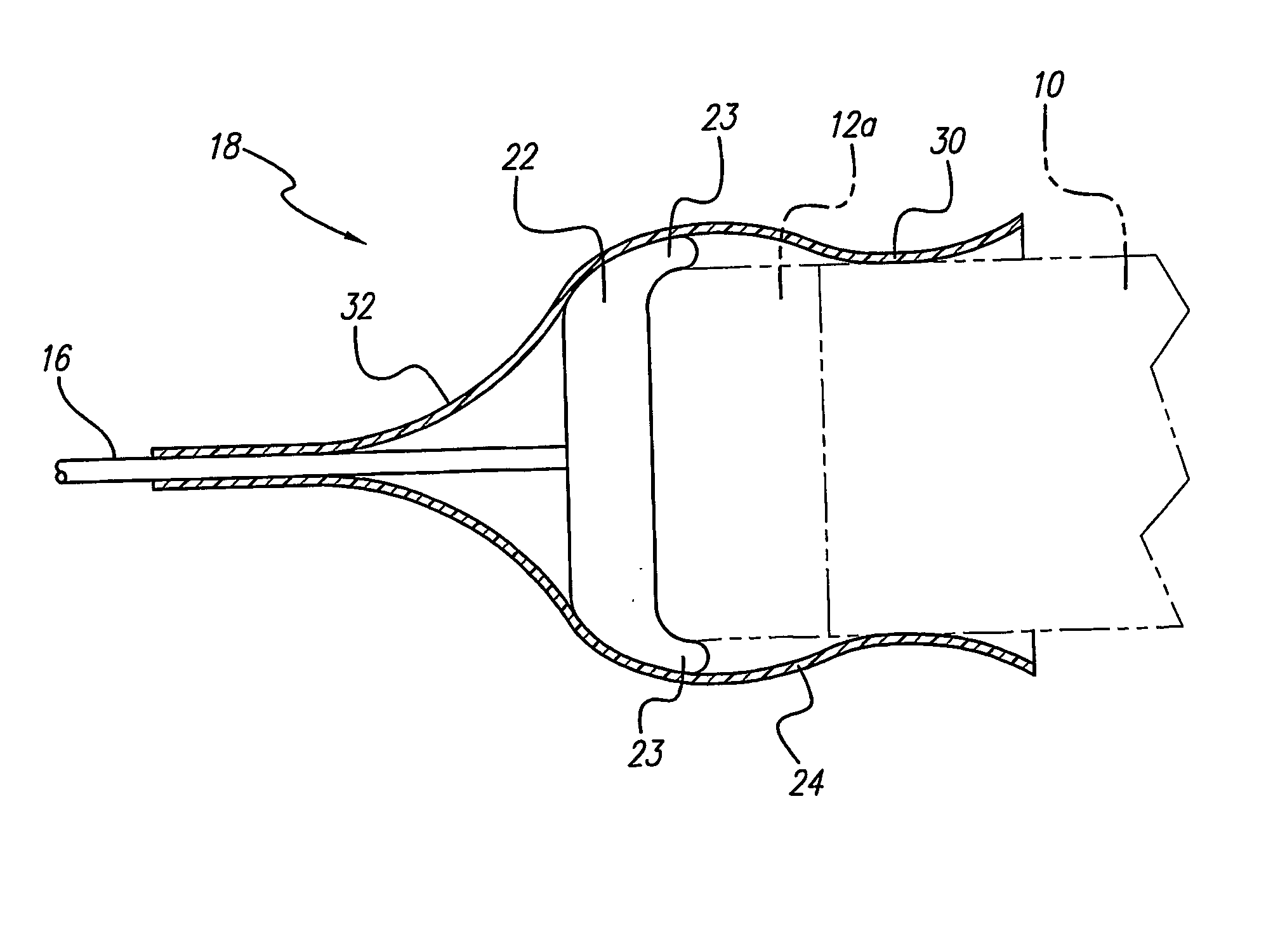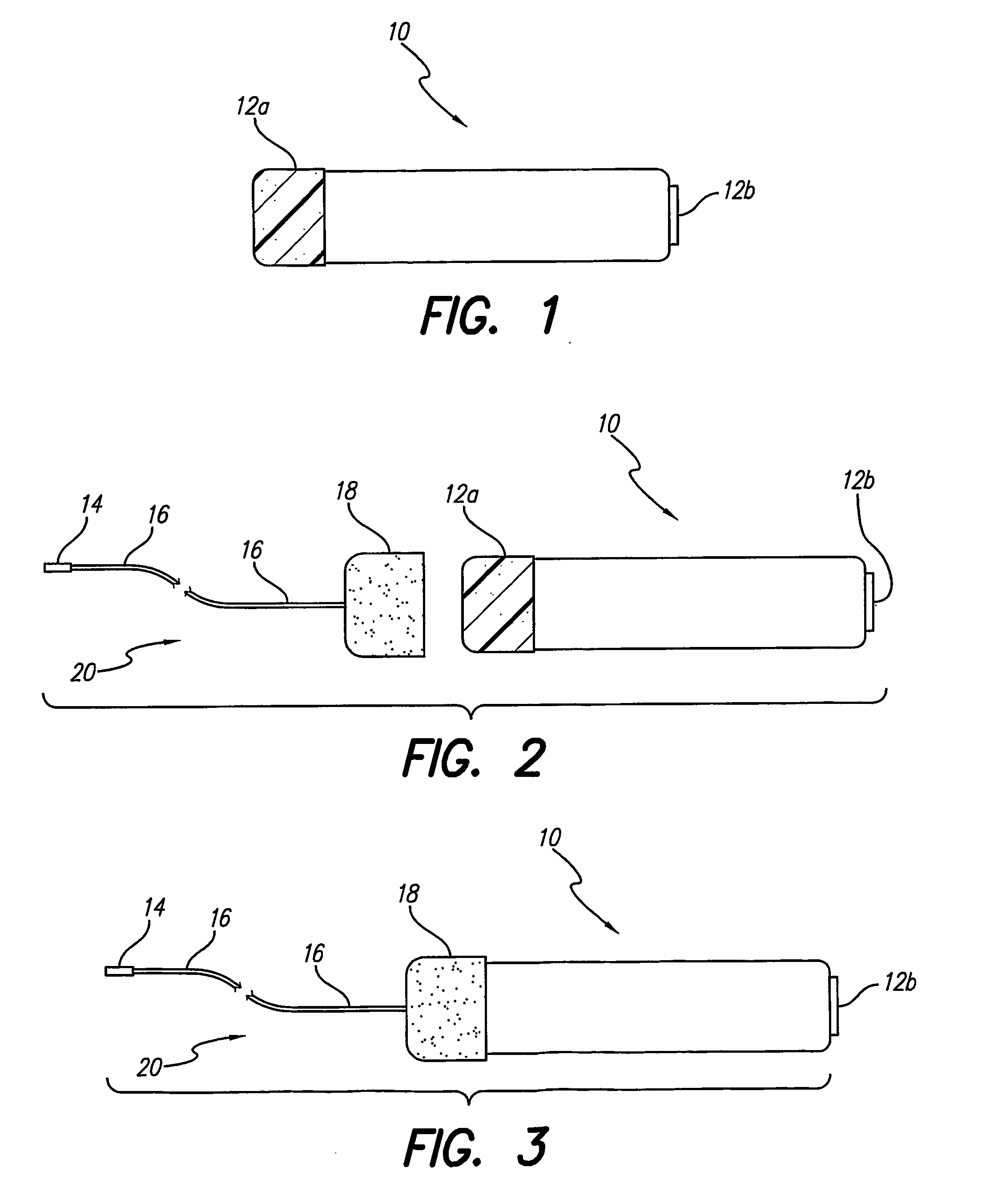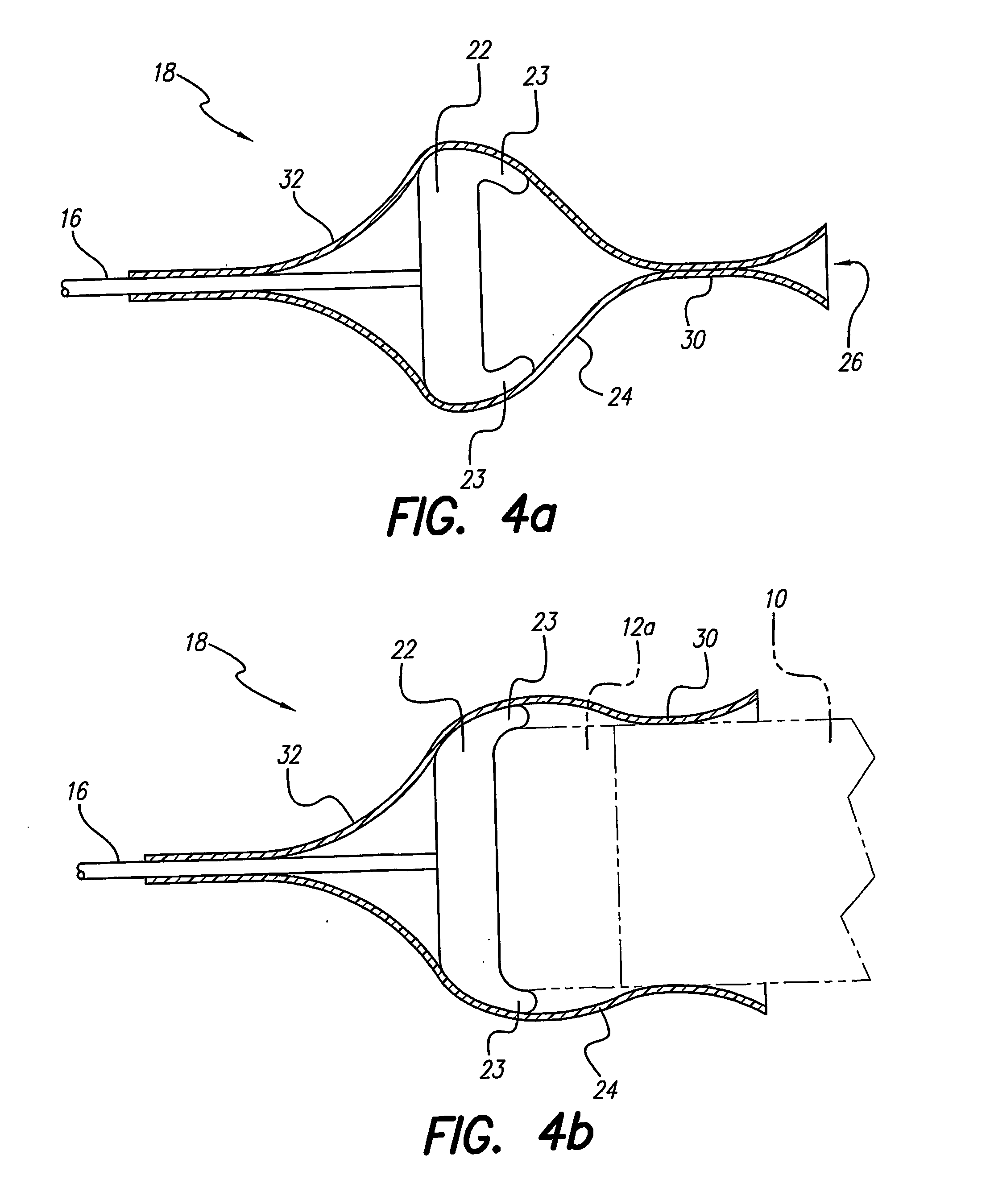Lead assembly for implantable microstimulator
a micro-stimulator and lead assembly technology, applied in the direction of coupling device connection, therapy, diagnostic recording/measuring, etc., can solve the problems of micro-device not being able to provide the intended stimulation or sensing, and the electrodes on the outer surface of the micro-device are not able to provide the stimulation or sensing
- Summary
- Abstract
- Description
- Claims
- Application Information
AI Technical Summary
Benefits of technology
Problems solved by technology
Method used
Image
Examples
Embodiment Construction
[0027] The following description is of the best mode presently contemplated for carrying out the invention. This description is not to be taken in a limiting sense, but is made merely for the purpose of describing the general principles of the invention. The scope of the invention should be determined with reference to the claims.
[0028] Implantable microdevices may serve many useful purposes through stimulating nerves, muscles, or other tissue (a microstimulator), or through sensing various physiological conditions (a microsensor) within a patient. Such a microdevice 10 is shown in FIG. 1. The microdevice 10 includes internal circuitry to receive and process signals, and to provide either sensing or stimulation through a first microdevice electrode 12a at one end, and a second microdevice electrode 12b at an opposite end. The microdevice 10 is very small to allow minimally invasive implantation. A representative microdevice 10 is about 2 to 3 cm in length, and about 3 mm in diamete...
PUM
| Property | Measurement | Unit |
|---|---|---|
| length | aaaaa | aaaaa |
| length | aaaaa | aaaaa |
| diameter | aaaaa | aaaaa |
Abstract
Description
Claims
Application Information
 Login to View More
Login to View More - R&D
- Intellectual Property
- Life Sciences
- Materials
- Tech Scout
- Unparalleled Data Quality
- Higher Quality Content
- 60% Fewer Hallucinations
Browse by: Latest US Patents, China's latest patents, Technical Efficacy Thesaurus, Application Domain, Technology Topic, Popular Technical Reports.
© 2025 PatSnap. All rights reserved.Legal|Privacy policy|Modern Slavery Act Transparency Statement|Sitemap|About US| Contact US: help@patsnap.com



